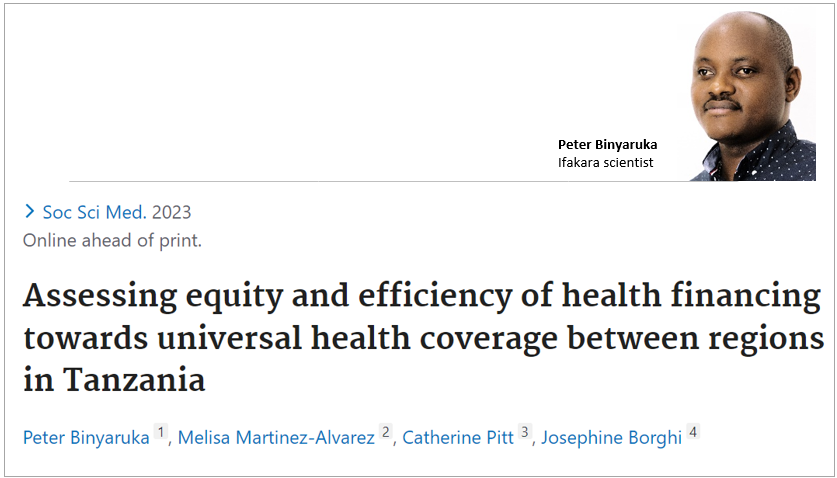
HEALTH FINANCING: Striking a balance between equity and efficiency

In the search for universal health coverage in Tanzania, a recent study has shed light on the state of health financing in the country, underlining the crucial need to improve equity and efficiency in the allocation and utilization of funds.
Led by Ifakara Health Institute seasoned scientist, Dr. Peter Binyaruka, along with colleagues Josephine Borghi, Catherine Pitt from the London School of Hygiene and Tropical Medicine, and Melisa Martinez-Alvarezhe from the Gambia at the London School of Hygiene & Tropical Medicine, the study examined health funding mechanisms across 26 regions in Tanzania during the 2017-18 period.
“Equity and efficiency in health financing are intermediate universal health coverage objectives…identified as intermediate UHC objectives by the WHO. Health systems need to mobilize more resources for health, especially through pre-payment mechanisms, while reducing reliance on out-of-pocket payments. Mobilized resources also need to be allocated equitably and spent efficiently in a bid to improve the UHC goals of service coverage, quality and financial protection and reduce within-country inequalities,” write the scientists.
Focus on 4 primary funding sources
The research focused on four primary funding sources – government allocations, donor contributions through the Health Basket Fund (HBF), household health insurance contributions, and out-of-pocket payments. It revealed significant disparities in per capita regional funding, showcasing pronounced differences in the financial landscape within the country.
Published in the Social Science & Medicine journal, the study disclosed significant variations in per capita health spending among regions, with notable differences in insurance contributions. Government and out-of-pocket payments emerged as major funding sources, while health insurance and donor contributions remained limited.
Social health insurance contributions were proportional, driven by members mainly from higher socioeconomic groups, while contributions to the Community Health Fund (CHF) were regressive, placing a burden on poorer households.
90% of funds “optimally utilized”
An efficiency analysis of health spending across regions revealed an average efficiency score of 90%, indicating that 90% of financial resources were optimally utilized to achieve UHC outputs, while 10% were either wasted or underutilized.
Stressing the importance of these findings for research and policy, the scientists said, “Our findings have important implications for research and policy. Our equity findings, such as considerable regional financing disparities, and inequitable contributions to community-based health insurance and out-of-pocket payments, highlight the need for regular sub-national resource allocation tracking and equity monitoring in household health care payments to inform progress towards UHC.”
Targeted resource allocation adjustments
Following the study, the scientists underscore the need for targeted resource allocation adjustments to enhance efficiency and have recommended policymakers to address supply- and demand-side barriers to healthcare access, ensuring a more equitable and efficient healthcare system.
“With the increasing focus on direct health facility financing (WHO, 2022), countries should establish robust allocation formulas considering health facility characteristics such as the economic status of the catchment population and performance. Policymakers should also ensure efficient resource spending to achieve goals, guarantee value for money, and minimize misallocation or misuse by strengthening or implementing public financial management systems.”
Read full publication here.
